By Mary Mwendwa
Meru County, Kenya: The smuggling of Khat, locally known as Miraa is being carried out openly in Kenya’s coastal town of Lamu. Renowned for its ancient architecture and other tourist attractions, Lamu town has been designated as a UNESCO heritage site.
The green and red leafy plant, also known as Catha edulis is used as a stimulant and it is believed to have the capacity to trigger excitement, loss of appetite, and euphoria.
Well-organized smugglers of Miraa who operate like mafia are transporting the commodity from Meru to Somalia through unofficial routes while raking billions of shillings. They use high-powered trucks that are hastily driven through the bushes without any adherence to traffic laws. Fatal accidents have been witnessed as a result.
The trucks cover a distance of 444 kilometers from Meru to Lamu, Meru is a hilly town tucked in the upper eastern part of Kenya.
It is an extremely dangerous affair to follow these trucks by road. The roads they use are suspected to be hideouts for Al Shabaab militants.
This investigation followed and got first-hand information on how the smuggling is done all the way from Meru County where miraa farms are located.
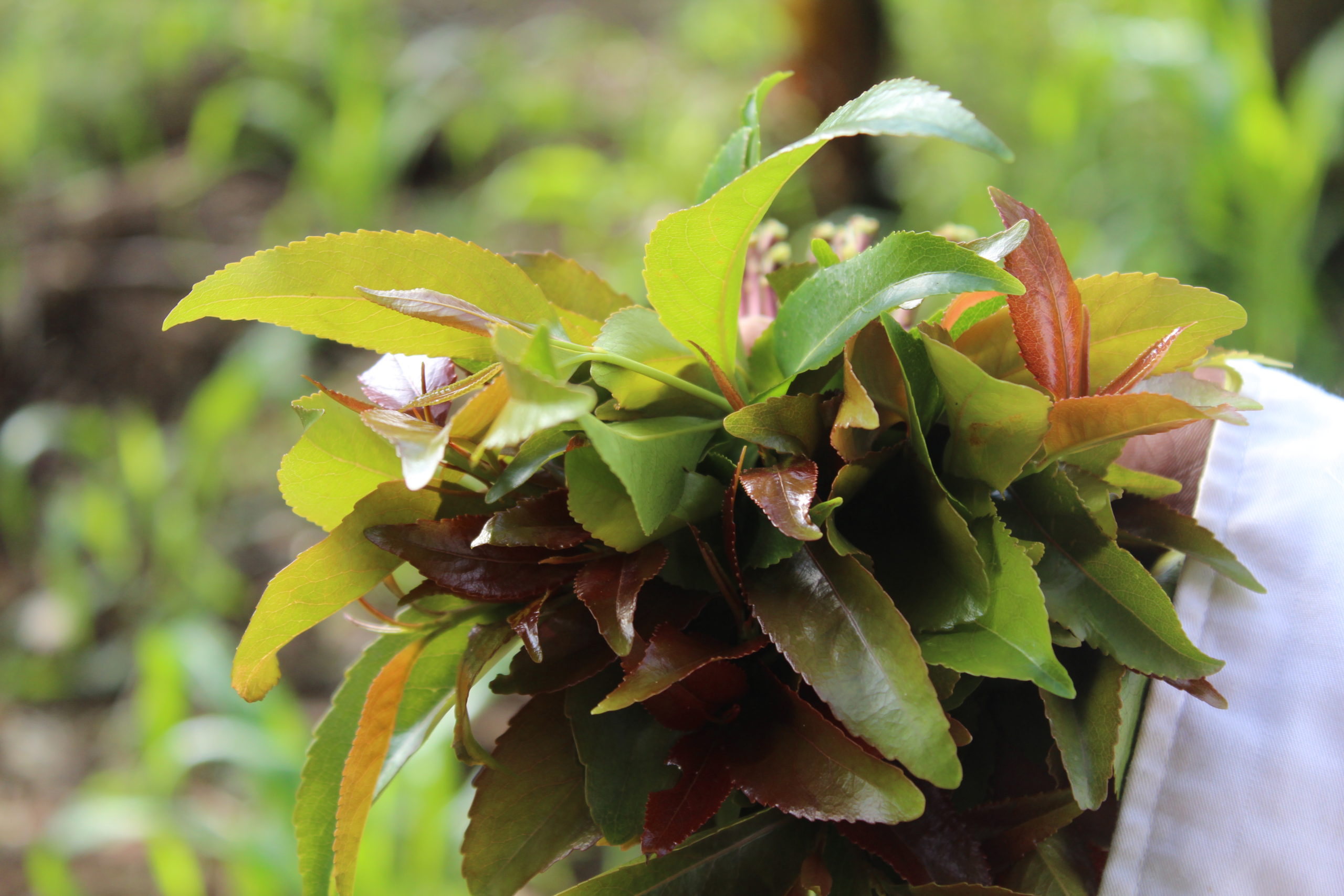
Lamu- Mokowe Landing site
Lamu’s Mokowe landing site is usually full of activity as early as 5 am in the morning. Tonnes of well-wrapped brown well-ventilated sacks are offloaded from Toyota Hilux trucks and transferred to boats packed at this landing site.
The loading happens in a blink of an eye. It is a well-coordinated activity where the loaders, boat captains, boat boys, and smugglers clearly know their roles. No one has time to give an interview or talk to anyone at this moment, only yelling and shouting happens at this chaotic point.
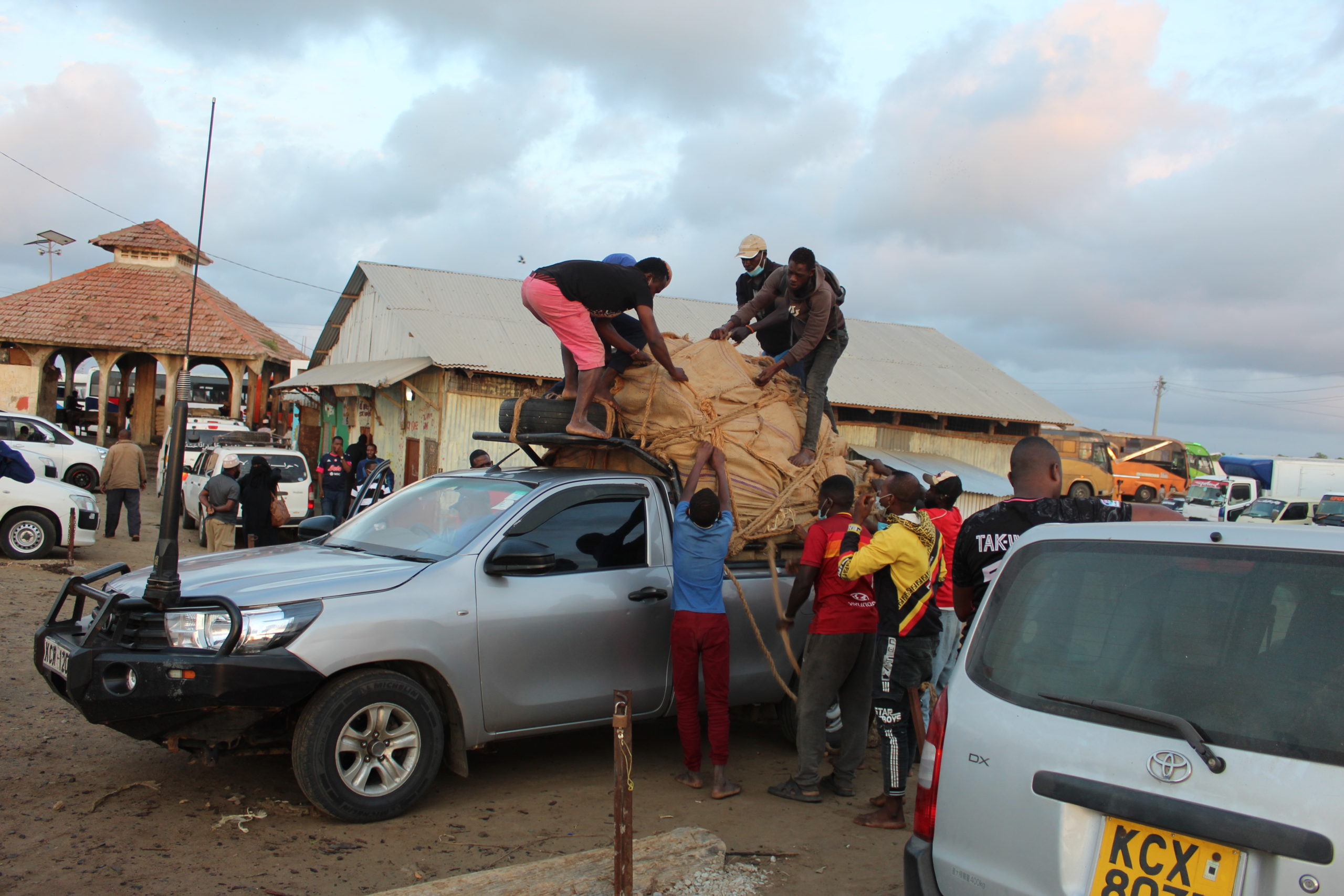
A famous boat captain in Lamu offers to give one.
Ali Lali Ali, a 30-year-old boat captain knows how the smuggling deal works so well. He transports tonnes of miraa using a boat owned by his boss every day, he believes his boss is a very rich miraa trader of Kenya’s Somali tribe origin.
Ali has been doing this work for 5 years.
He confides to me that it is a very risky job but he is in it for the sake of money. “We use speed boats with two engines with no protective gear, we have had so many cases of people and boats disappearing in the ocean. Even the best-known swimmers have been victims.”
“The route to Kiunga is rough, the tides are so rough that even now we can’t get to kyamboni” Ali says.
A single boat ferries between 50-70 tonnes of Miraa per trip to Kiunga.
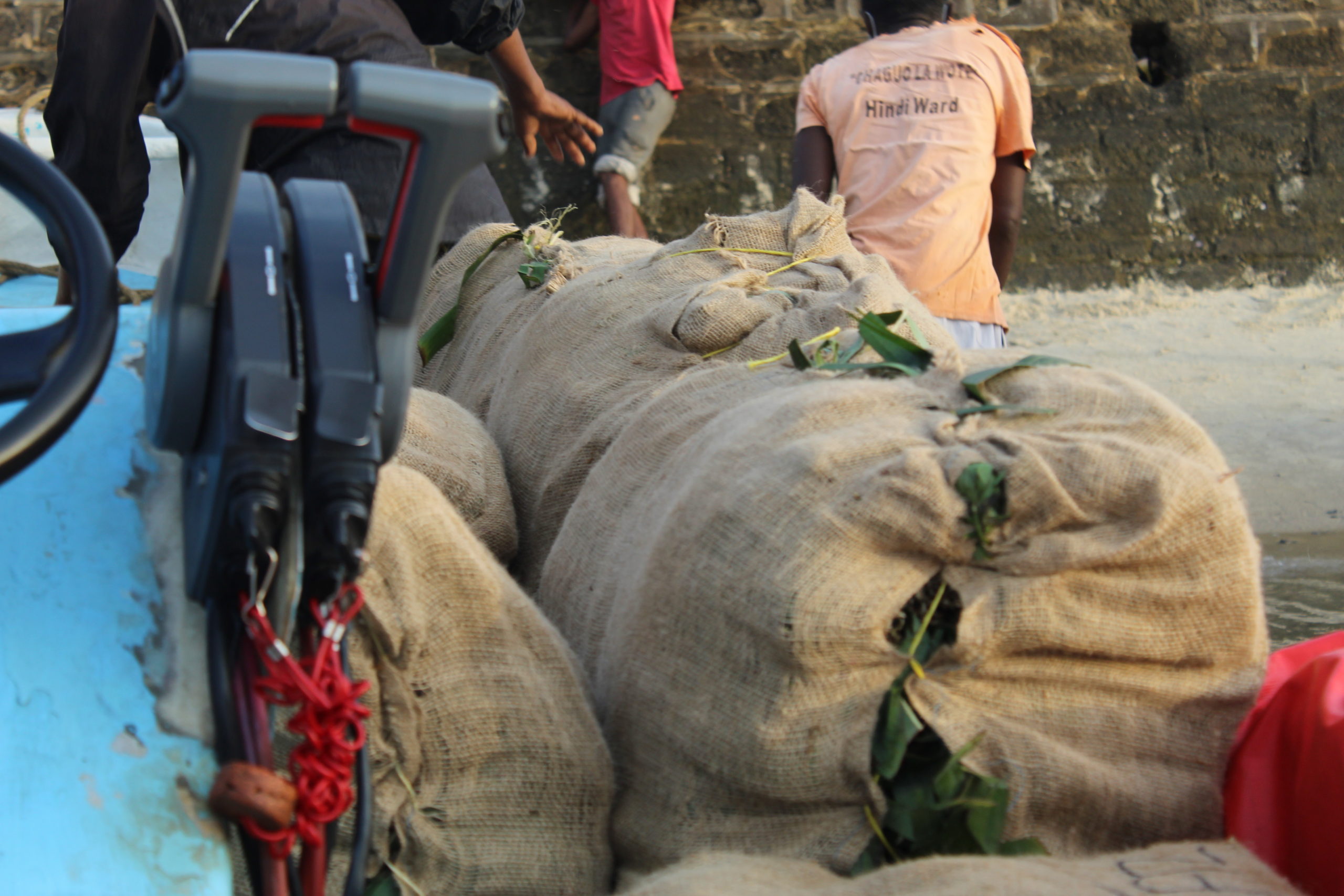
The writer of this investigation took to the task to accompany Ali and his two crew members in a speed boat smuggling 50 tonnes of Miraa destined for Somalia through the Kiunga border.
The risky and treacherous two-hour journey in the sea was a clear indicator that miraa smuggling to Somalia is a life and death ordeal.
There are no documents showing any tax or levy payment for this kind of trade. Ali tells me that police usually collect 200 KSH per boat at Mukoye, and 500 KSH at Mkokoni which is charged by the Beach Management Unit (BMU).
Ali is paid 3,000 KSH per trip to Kiunga while his crew gets 2,000 KSH each. If they manage to get to Kyamboni they are paid 6,000 KSH for the captain and crew 4,000 KSH respectively.
Ali confirms that he only does a single trip every day.
Ali and his crew are done for the day. We embark on a return journey without any other passengers or cargo on board. Again at Mkokoni landing site in Kiunga, several trucks are packed ready to receive the khat. It is now ready to go to Mogadishu, the capital of Somalia.
Similar scenes like the ones at the Mokowe landing site are witnessed here, there is no wasting of time. Khat is loaded on the Lorries at a lighting speed.
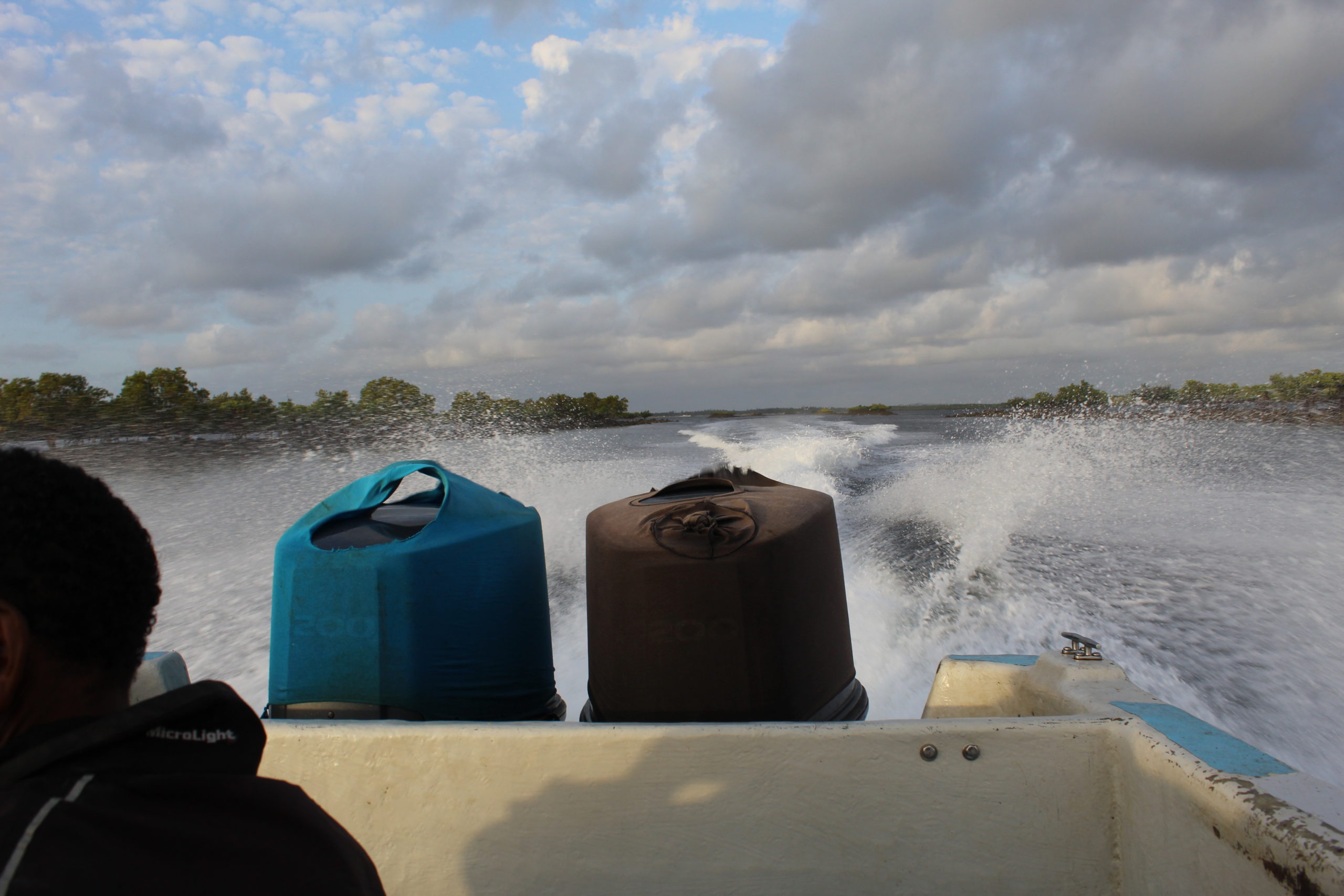
His boss, only known by his first name as Najib, commands and is in charge of Miraa destined for Somalia through the Kiunga border. Najib knows his trade, he will coordinate via a cell phone until the khat reaches Mogadishu.
No one knows exactly how much Najib makes but it is clear that he is making billions of shillings in this unregulated trade of Miraa. He is well connected to brokers in Somalia who aid him in delivering khat to customers who buy the best grade of the stimulant.
Dressed in a navy blue Kanzu, a religious robe worn by Muslim men, he shouts at the top of his voice as he counts the number of miraa sacks to be loaded on one of the boats he owns.
He is well known to locals here, he interacts with them freely.
“Huyu ni boss wetu, yeye hutupa vibarua za kubeba miraa sana”- This is our boss, he gives us casual jobs of loading miraa, “ says Mohammed Hassan, one of the loaders at the landing site.
The khat is destined for Somalia through Kiunga, a porous border town between Kenya and Somalia. Speed boats owned by Kenyan Somali traders facilitate the transportation through the rough waters heightened by strong winds currently being witnessed at the Indian Ocean to Kiunga.
Stories of boats ferrying miraa and people who have disappeared while on transit to Kiunga are not new to Lamu residents.
The stimulant is commonly chewed by men with few women using it. It is known to fetch good money. Traders and farmers in Kenya have for a long time enjoyed its benefits both at local and international markets.
However, a fresh twist of smuggling has taken over the market.
Seven years ago, the stimulant export to the London market was banned and declared as a stimulant and class C drug. This came as a blow to farmers, but the Somalia market came to their rescue.
In 2020, Somalia banned exports of Miraa from Kenya after the two countries’ diplomatic ties went sour. This has fuelled fresh smuggling deals between Kenyan traders and their Somalia counterparts to thrive in the illegal trade.
The ban has left Kenyan miraa farmers counting losses because there is no regulation of prices while brokers make a kill out of the smuggling.
The lucrative money trail has seen Kenya lose billions of shillings in taxes.
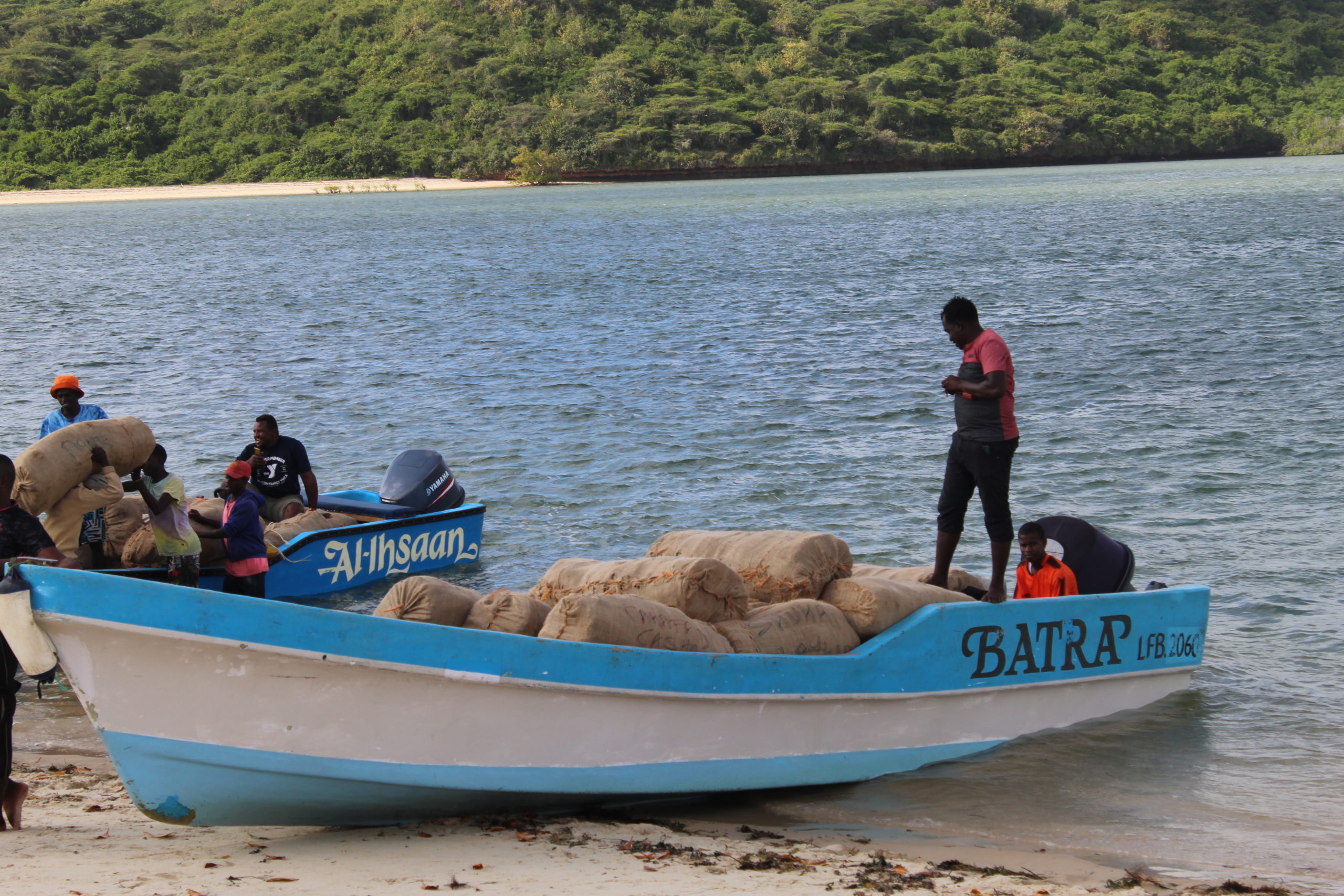
Desperation at Miraa farms in Meru County
My journey to investigate where miraa smuggling starts began right in the farms in Meru County. This is where the miraa smuggling sequence begins. It starts right from the farms where farmers are exploited with low market prices that are not regulated by anyone making it a lucrative deal for the brokers involved.
Editor Ncororo Kungutia, a retired teacher in her late 60s, widowed and a mother of 9 is sad and feels hopeless.
She is among farmers at Igembe South in Maua Constituency in Meru who are a sad lot, they are suffering at the hands of brokers and middlemen who are leaving them to wallow in poverty. “I have several acres of Miraa farms but in recent years I can barely make any income from this plant.” She narrates.
“Miraa was our gold plant, we have educated our children and developed many projects through miraa farming, now it is a sad state of affairs. Nothing is forthcoming, I am thinking of uprooting the plant.”
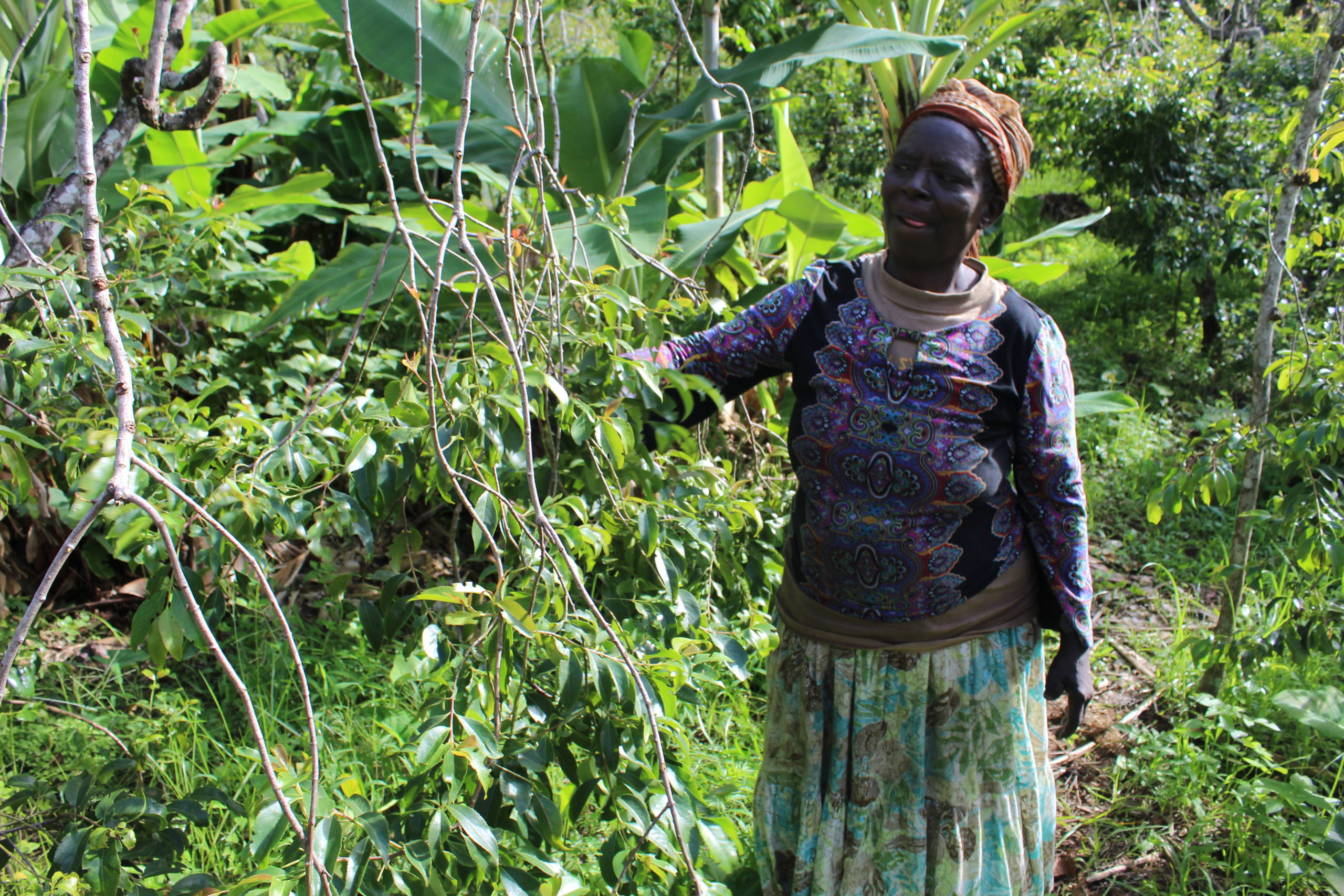
Kungutia who also has three children suffering from mental disorders says that since Miraa was banned from the London market and Somalia, there has been no regulation and order on how it is sold by the farmers.
“The middlemen just come to our farms and asks us to sell them miraa by quoting the lowest prices. Those who refuse end up losing on the deal. Due to desperation, we sell to them because we have nowhere to take miraa.
Covid-19 came as a blow to farmers like Kungutia. “Things have worsened with the outbreak of covid-19. We are slowly sinking into our deathbeds, no one is coming to our rescue.”
At Antobochiu division, Antuamwae village, David Nguruni a father of six aged 53 recounts a similar story to Kungutia’s. “Brokers are our biggest threat in this business, I owned several cars and properties just from miraa farming. Now, I can sell miraa as low as 1000 KSH per harvest while some years back I could sell at 50,000 KSH.
Nguruni confirms how he has sold part of his property and his cars to make a living. “I am now selling my property to allow me to get some money for my needs and children’s education.”
Nguruni says that the ban on Miraa to Somalia and other foreign countries has hit them hard. “Smugglers and brokers are making a kill out of this situation, no one is asking them to pay taxes, and they come to us farmers quoting prices they feel like. We need to be rescued from this mess.”
Nguruni boldly states that nobody has kept tabs on how much money the smugglers and brokers make out of the miraa they send to Somalia.
“Covid-19 has also affected us badly, when lockdowns and movement restrictions are put in place it means not getting even a single coin.” He sadly narrates.
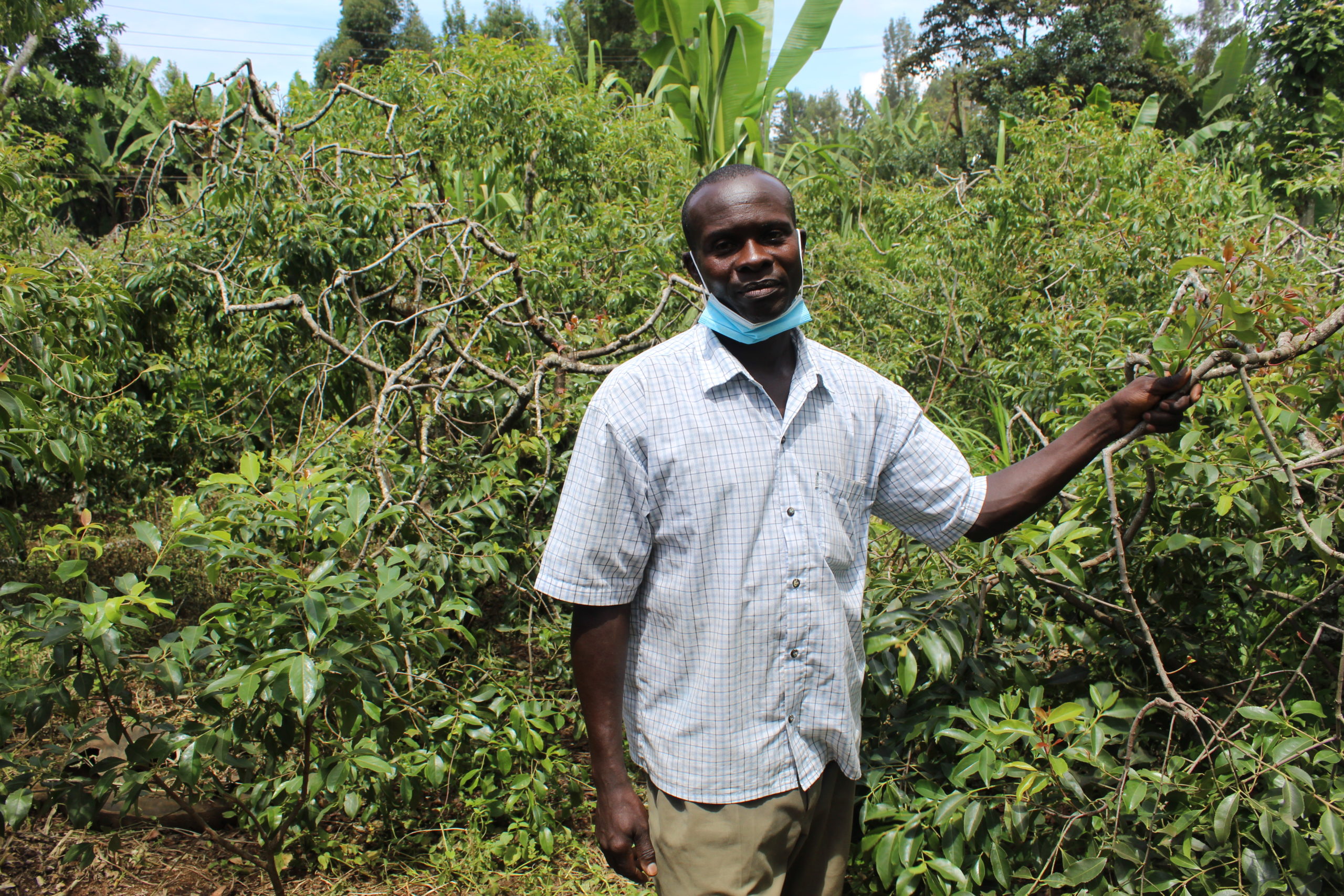
Jacob Ngozi, coordinator at Nyambene Miraa Traders Association feels that the strained relationship between Kenya and Somalia has fuelled the smuggling of Miraa and left farmers in desperation.
“We pray that our president intervenes and helps to speed up the talks in Somalia to allow our farmers to have direct market contact in Somalia, now it is closed and smugglers are making billions from farmers’ hard-earned sweat.”
Ngozi notes with a lot of concern how the miraa sector is slipping away from the farmers’ hands to smugglers and brokers.” We urge the National and County governments to urgently intervene and save the situation, farmers are becoming desperate day by day.”
“Covid-19 also came in as another blow to the farmers, restrictions of movement, curfews and other measures to curb the pandemic have added more injury to the fragile sector.”
Ngozi reveals how farmers could make good money before the London and Mogadishu markets were closed.” An acre of Miraa could fetch up to 80,000 KSH per harvest, miraa is harvested twice a month. Now, for the same acre a farmer gets as little as 1000 KSH per harvest. These prices are dictated by brokers who work closely with smugglers, they do not care about the farmer anymore.”
At the same time, Ngozi reveals that the price of miraa is never regulated, the stimulant comes in different grades and qualities. The best grade is for export and fetches good money to the farmer.
Ngozi confides that Khat comes in various grades and qualities. The best grade is the one that used to be exported to Somalia. That one fetches from 800-1000 KSH on average. The other grades that are consumed locally vary and traders and brokers sell as per what they believe will give them maximum profits.
“A lot of money is lost in smuggling, no one has a trace of exactly how much is lost, but from our own estimates those people part with billions of shillings.”
Ngozi remembers how a task force for Miraa trade was once efficient in addressing matters affecting the sector. “After the task force was disbanded, we lost. We have no one to table our issues for action.”
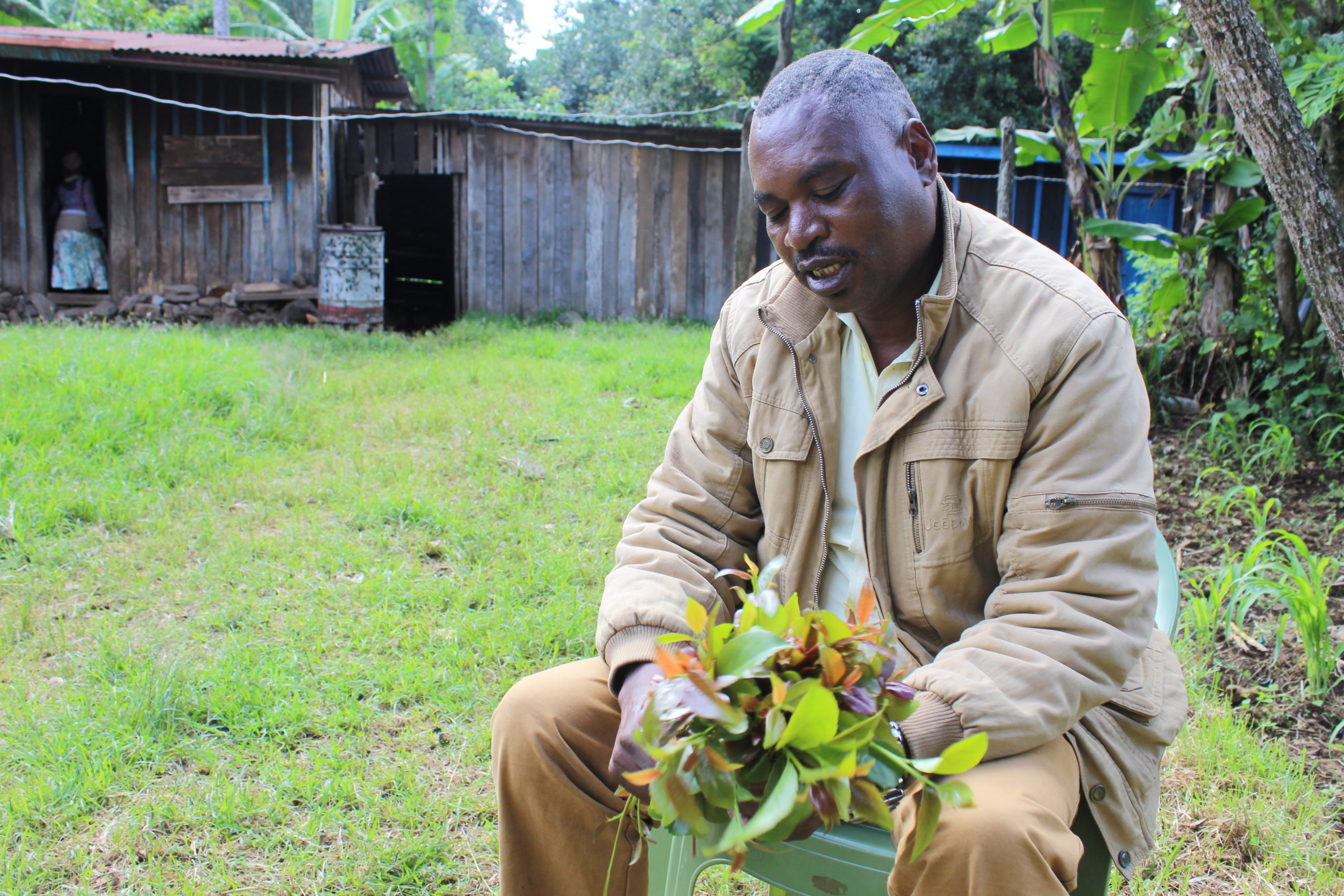
Policy and legislation
Kenya’s Miraa, Pyrethrum, and Other Industrial Crops (MPIC), one of the directorates created under the Agriculture and Food Authority (AFA) director, James Mutia notes that for a long time there was no regulation on Miraa trade in the country.
“Miraa is a scheduled cash crop in Kenya, we are now working on regulation and code of practice that will soon regulate the sector and see farmers breathe a sigh of relief.”
Mutia divulges how the Somalia market was a huge foreign exchange earner for Kenya.” Somalia export market used to account for more than 70% of revenue in Kenya.”
“Ban of Miraa to Somalia came as a big blow to us and also farmers. We are now losing big on the huge market that was bringing in a lot of money.”
“The Somalia market used to fetch on average 20-30 Million Kenya shillings per day. It was a huge economic activity for us as a country.”
Mutia says, “Farmers are now suffering because other markets in London and Netherlands were also closed.”
Mutia confirms that the Kenya government has initiated talks with Somalia to resolve the diplomatic row that led to the closure of the khat market in the Horn of African Country.
Mutia confirms that the Harmonised Code (HS) and the code of practice that is now in its final stages will help to track down smugglers. “We have been having a huge challenge because of those cartels that are sometimes very powerful and block other traders in the market. These cartels block markets while maximizing profits, through this regulation we will allow traders to get a permit and establish market prices to help in the harmonization of the market.”
“You can’t get money from traders if there is no guiding regulation.” Mutia believes.
He also notes that covid-19 disrupted all agricultural value chains including miraa noting that miraa as a crop helps in adding tree cover that helps in carbon reduction in the atmosphere.
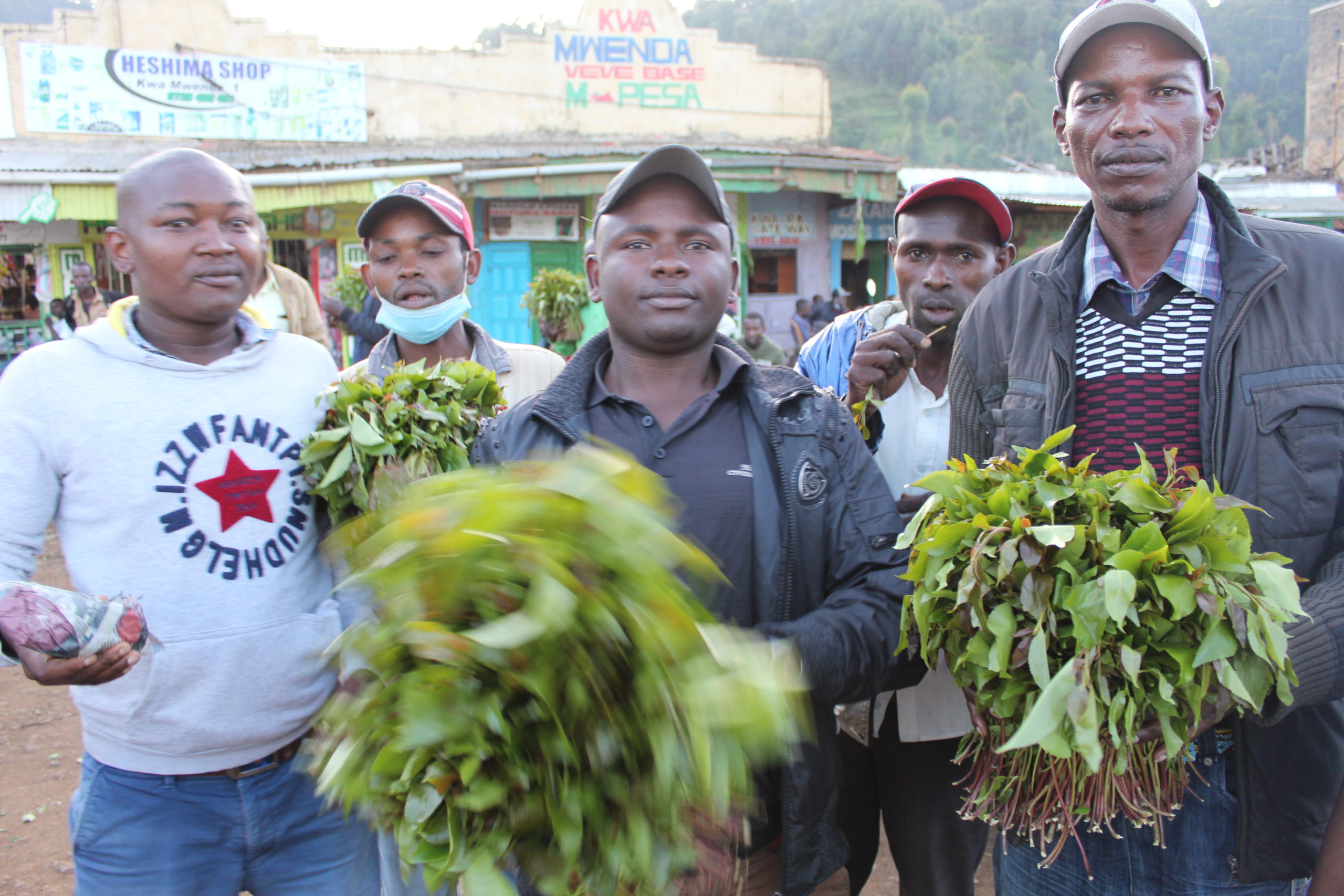
According to the Central Bank of Kenya the value of exports, largely Khat, injected 3.24 billion shillings to 11.83 billion shillings to the local economy in the 12 months of December 2019 compared to 2020.
Kenya is among nearly 50 African countries that signed a deal to create the African Continental Free Trade Area( AfCFTA) in Kigali, Rwanda 2018. The formation of these free trade areas is expected to create a single market where Kenya stands to gain the most, according to the World Bank.
This trade deal is currently facing challenges in the Miraa export sector leading to huge losses in revenue.
This article was developed with the support of the Money Trail Project (www.money-trail.org).














